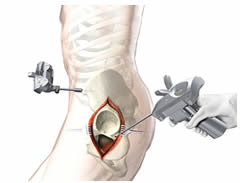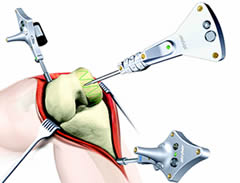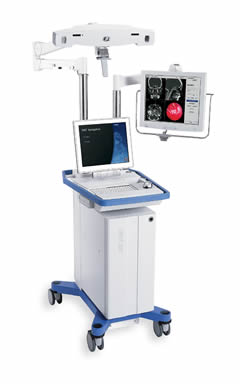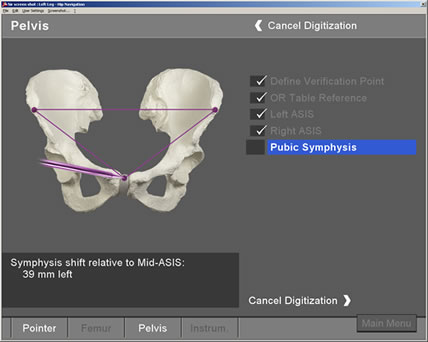Joseph P. Nessler, MD
New Technology: Stryker® Navigation
News Media Fact Sheet
Computer-Assited Navigation for Knee & Hip Replacement Surgery
 What is Computer-Assisted Navigation for Knee and Hip Replacement Surgery>
What is Computer-Assisted Navigation for Knee and Hip Replacement Surgery>
- It functions like a "surveyor's tool" that helps the surgeon to align an orient knee and hip implants with the patient's anatomy.
- It provides the surgeon with an interactive display of the lines, angles and measurements needed to give the patient's “new” joint the best strength, stability and range of movement.
- It is a rapidly expanding area of medical technology for orthopedic surgery.
 How Does It Work?
How Does It Work?
- In the operating room infrared optics and tracking software continually monitor the position and mechanical alignment of the implant components relative to the patient's anatomy.
- Minimally invasive wireless instruments send data pertaining to the knee or hip movements (kinematics) to a computer.
- The computer analyzes and displays the kinematic data on screen in the form of charts and graphs.
- These images provide the surgeon with the angles, lines and measurements needed to align the prosthesis with the patient.
 What Are Its Benefits?
What Are Its Benefits?
- It does not require pre-operative x-rays or CT scans.
- It provides the surgeon with a comprehensive understanding of the patient's knee or hip mechanics before any bone is cut.
- It allows the surgeon to make adjustments to within a fraction of a degree, ensuring the best possible "fit" for the pros thesis and best joint motion.
- It allows correct position and orientation of the implants even in difficult anatomic situations.
- It leads to shorter hospitalization, fewer complications and improved joint stability.
Who Will Benefit from It?
More replacements, or arthroplasties, are performed on the knee than on any other joint. About 270,000 total knee arthroplasties (TKA) are performed each year in the United States, a figure that is estimated to rise to 474,000 by 2030.* Increasingly, TKA is being performed with the aid of Computer-Assisted Navigation.
TKA is usually recommended for patients with severe knee pain and disability caused by damage to cartilage from rheumatoid arthritis, osteoarthritis or trauma. More than 90 percent of people who undergo total knee replacement experience a dramatic reduction of knee pain and a significant improvement in the ability to perform common activities of daily living. Computer-Aided Navigation is also being used for total hip replacement.
* American Academy of Orthopedic Surgeons
1000-933-000 Rev. None




 What is Computer-Assisted Navigation for Knee and Hip Replacement Surgery>
What is Computer-Assisted Navigation for Knee and Hip Replacement Surgery> How Does It Work?
How Does It Work? What Are Its Benefits?
What Are Its Benefits?
